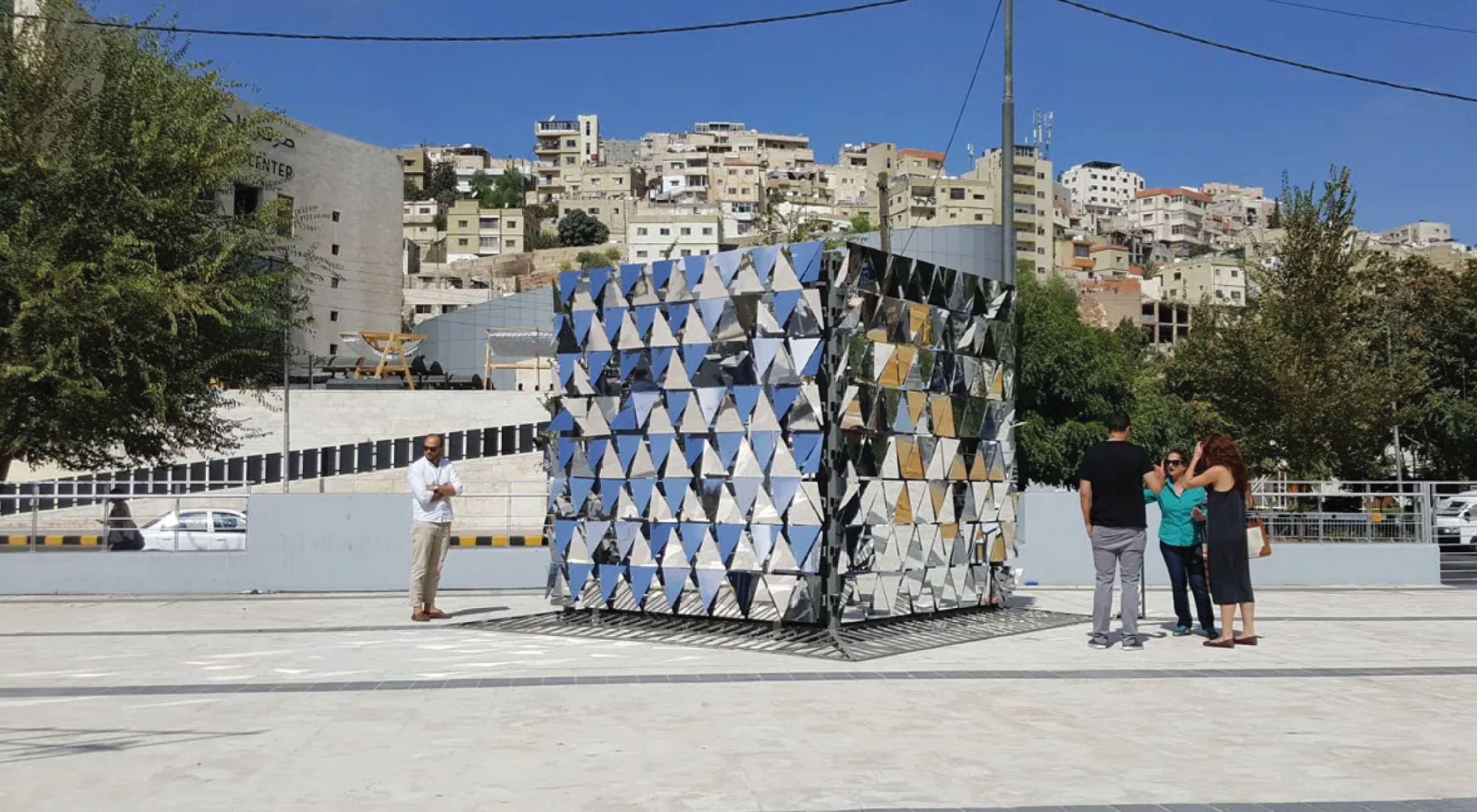
Cube X3
Designed by :Uriqat architects Fabrication: Moushira Elamrawy Year: 2017
Location: Amman, Jordan Phase: Built installation Photo credit: Uriqat architects ,Moushira Elamrawy ,Ammandesign week
My role
I had the privilege of collaborating with my mentor, Moushira El Amrawy, who served as the design technologist overseeing the fabrication process. In my role as a fabrication and assembly assistant, I contributed to various aspects of the project, including facade assembly, network connections, wiring, motor preparation, and site assembly. I am deeply grateful to Moushira, who played a pivotal role as my mentor in Fab Lab Irbid 2017, imparting valuable knowledge in design technology and digital fabrication. She continues to be a source of inspiration and a role model for me.
I would also like to express my gratitude to Uraiqat architects for providing me with the opportunity to contribute to this project. Working with them allowed me to gain invaluable insights and a closer look at their innovative practices in Amman, enhancing my overall learning experience
Constructed for Amman Design Week, the X3-Cube installation design was characterized as an object dispersed throughout space, and society diffused through movement. Developed for Uraiqat architects, the experimental project sought to challenge perceptions of self and one's relationship within the urban environment. Configured as a cube with each facade side measuring 3 meters, the installation occupied a public space.
The cube, comprised of tiny moving components, was designed to prompt contemplation about self-perception and individual placement within the city. Originally conceived to engage with the audience through sensor-based interactions tied to their movements, a shift in approach was deemed necessary due to the dense crowd. Consequently, the decision was made to offer an individualized experience, where individuals found themselves in a dynamic interplay with the reflective creature.
Within this interactive setting, individuals discovered moments where they were unable to control the creature's movement, alternating with instances where they became the focal point of its motions. Observing others, they realized that seemingly shared perspectives could yield diametrically opposed views.
A meticulous technical approach was undertaken to synchronize the movements of 134 triangles (arranged in 8 rows of 17 triangles on each cube face). Realistically, the control of over 500 motors simultaneously was achievable, enabling the realization of distinct movements for each triangle. These synchronized motions produced a collective geometrical effect. Each of the four sides of the cube featured diverse movement scenarios, revealing nuanced meanings associated with citizens' interactions with both the city and themselves.




